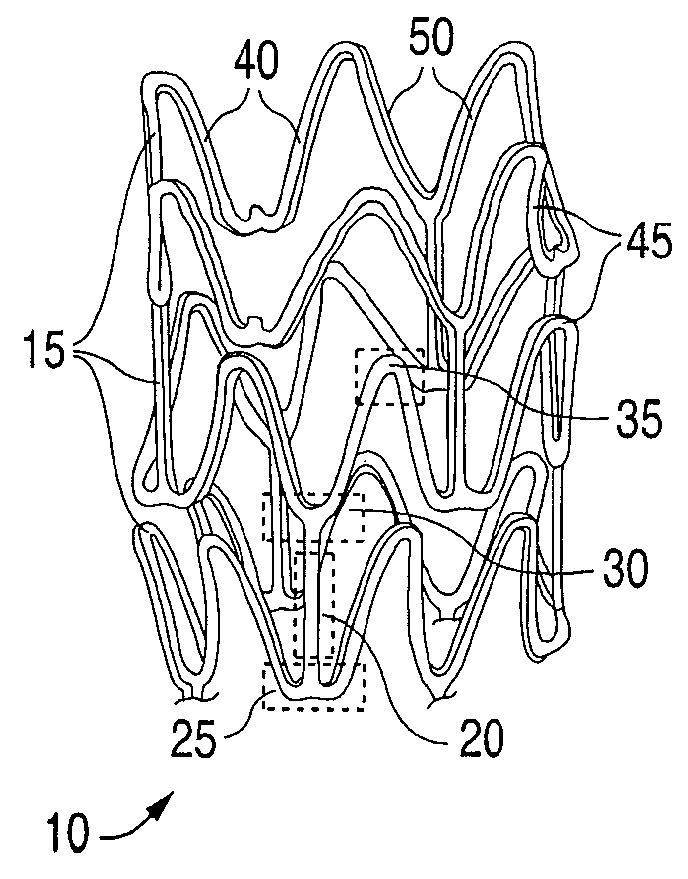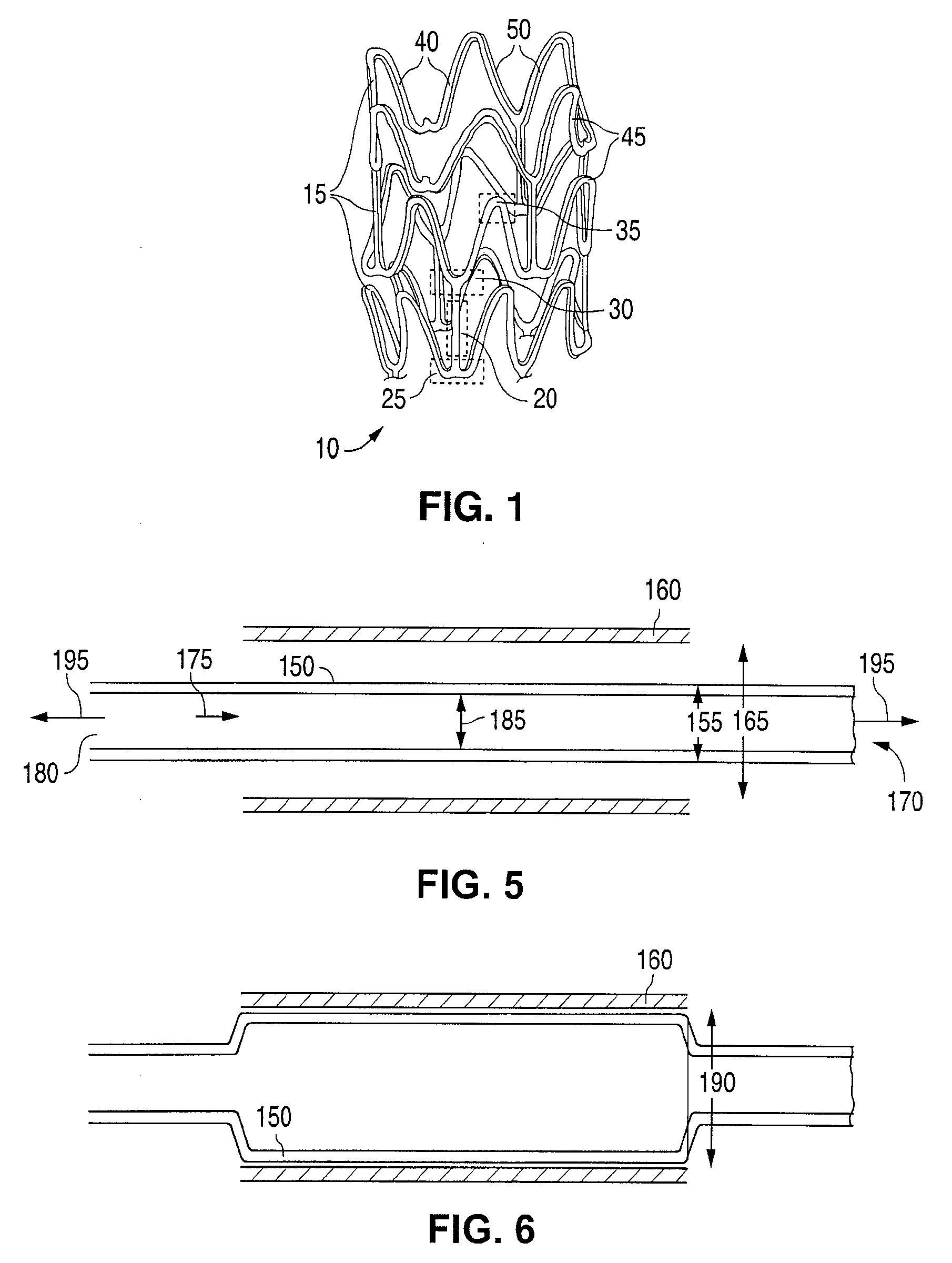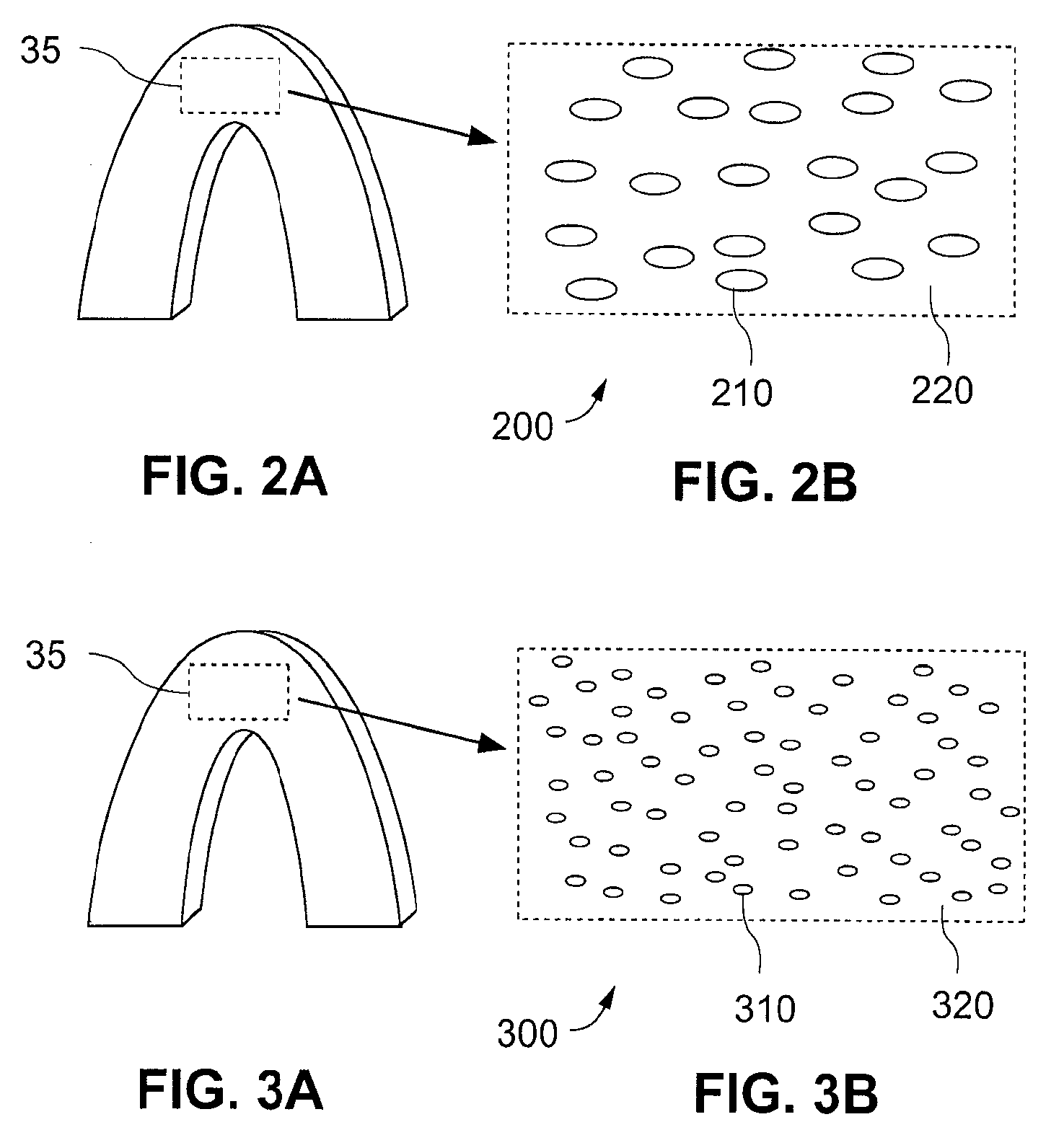Stent With Nucleating Agent
a technology of nucleating agent and stent, which is applied in the field of nucleating agent manufacturing of stents, can solve the problems of deteriorating mechanical properties and stability of formed stents, and achieve the effect of reducing the crystal size of polymer tubing and increasing the crystallinity
- Summary
- Abstract
- Description
- Claims
- Application Information
AI Technical Summary
Benefits of technology
Problems solved by technology
Method used
Image
Examples
example 1
PLGA Stent Preparation Using PGA as a Nucleating Agent
[0099]1. Blend Preparation—1 kg of high molecular weight PLGA (LLA:GA=90:10) is blended with 50 g PGA at room temperature in a mechanical blender, or through melt blending using a twin screw extruder, or through solution blending by dissolving both PLGA and PGA in a co-solvent and precipitating them in a non-solvent.
2. Tubing Extrusion—The PLGA tubing is formed through extrusion in a single or twin screw extruder with a puller. The size of the extruded tubing is set at 0.02″ for the ID and 0.07″ for the OD. The tubing is cooled to room temperature.
3. Stent Preparation—In order to further increase the crystallinity of the extruded PLGA tubing, the tubing with ID=0.02″ and OD=0.07″ is expanded in a glass mold at about 180° F. The tubing is then cooled to room temperature. The expanded tubing has an ID=0.12″ and an OD=0.13″ and is cut by a laser and crimped to a smaller size of 0.05″.
example 2
PLGA Stent Preparation Using PGLA as a Nucleating Agent
[0100]1. Blend Preparation—1 kg of high molecular weight PLGA (LLA:GA=90:10) is blended with 50 g PGLA (GA:LLA=98:2) at room temperature in a mechanical blender, or through melt blending using a twin screw extruder, or through solution blending by dissolving both PLGA and PGLA in a co-solvent and precipitating them in a non-solvent.
2. Tubing Extrusion—The PLGA tubing is formed through extrusion in a single or twin screw extruder with a puller. The size of the extruded tubing is set at 0.02″ for the ID and 0.07″ for the OD. The tubing is cooled to room temperature.
3. Stent Preparation—In order to further increase the crystallinity of the extruded PLGA tubing, the tubing with ID=0.02″ and OD=0.07″ is expanded in a glass mold at about 180° F. The tubing is then cooled to room temperature. The expanded tubing has an ID=0.12″ and an OD=0.13″ and is cut by a laser and crimped to a smaller size of 0.05″.
example 3
PLGA Stent Preparation Using Nano Magnesium Silicate Hydrate as a Nucleating Agent
[0101]1. Blend Preparation—1 kg of high molecular weight PLGA (LLA:GA=90:10) is blended with 10 g nano magnesium silicate hydrate at room temperature in a mechanical blender, or through melt blending using a twin screw extruder, or through solution blending by dissolving PLGA in a solvent with suspended nano magnesium silicate hydrate particles and precipitating the mixture in a non-solvent.
2. Tubing Extrusion—The PLGA tubing is formed through extrusion in a single or twin screw extruder. The size of the extruded tubing is set at 0.02″ for the ID and 0.07″ for the OD. The tubing is cooled to room temperature.
3. Stent Preparation—In order to further increase the crystallinity of the extruded PLGA tubing, the tubing with ID=0.02″ and OD=0.07″ is expanded in a glass mold at about 180° F. The tubing is then cooled to room temperature. The expanded tubing has an ID=0.12″ and an OD=0.13″ and is cut by a lase...
PUM
| Property | Measurement | Unit |
|---|---|---|
| human body temperature | aaaaa | aaaaa |
| size | aaaaa | aaaaa |
| temperature | aaaaa | aaaaa |
Abstract
Description
Claims
Application Information
 Login to View More
Login to View More - R&D
- Intellectual Property
- Life Sciences
- Materials
- Tech Scout
- Unparalleled Data Quality
- Higher Quality Content
- 60% Fewer Hallucinations
Browse by: Latest US Patents, China's latest patents, Technical Efficacy Thesaurus, Application Domain, Technology Topic, Popular Technical Reports.
© 2025 PatSnap. All rights reserved.Legal|Privacy policy|Modern Slavery Act Transparency Statement|Sitemap|About US| Contact US: help@patsnap.com



